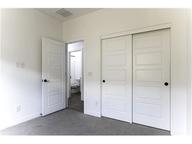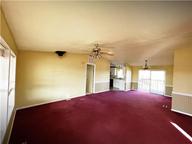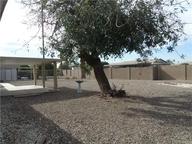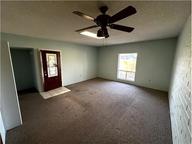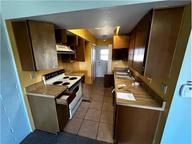Residential Sales in January 2025
New Home Sales
Sales of new single-family houses in January 2025 were at a seasonally adjusted annual rate of 657,000, according to estimates released jointly today by the U.S. Census Bureau and the Department of Housing and Urban Development This is 10 5 percent (±19.9 percent)* below the revised December 2024 rate of 734,000 and is 1.1 percent (±15.3 percent)* below the January 2024 estimate of 664,000.
Sales Price
The median sales price of new houses sold in January 2025 was $446,300. This is 7.5 percent (±12.5 percent)* above the December 2024 median sales price of $415,000 and 3 7 percent (±11 4 percent)* above the January 2024 median sales price of $430,400. The average sales price of new houses sold in January 2025 was $510,000. This is 0.1 percent (± 9.2 percent)* above the December 2024 average sales price of $509,700 and is 3.4 percent (± 8.6 percent)* below the January 2024 average sales price of $527,800.”
For Sale Inventory and Months Supply
The seasonally-adjusted estimate of new houses for sale at the end of January was 495,000. This is 1.4 percent (± 1.8 percent)* above the December 2024 estimate of 488,000 and is 7.4 percent (± 5.2 percent) above the January 2024 estimate of new houses for sale 461,000. This represents a supply of 9.0 months at the current sales rate. This is 12.5 percent (±20.7 percent)* above the December 2024 estimate of 8.0 months, and 8.4 percent (± 19.0 percent)* above the January 2024 estimate of 8.3 months.”
The February report is scheduled for release on March 25, 2025 View the full schedule in the Economic Briefing Room. The full text and tables for this release can be found at www.census.gov/construction/nrs/index.html

EXPLANATORY NOTES These statistics are estimated from sample surveys. They are subject to sampling variability as well as nonsampling error including bias and variance from response, nonreporting, and undercoverage. Estimated average relative standard errors of the preliminary data are shown in the tables. Whenever a statement such as "2.5 percent (±3.2%) above" appears in the text, this indicates the range (-0 7 to +5 7 percent) in which the actual percent change is likely to have occurred. All ranges given for percent changes are 90-percent confidence intervals and account only for sampling variability. If a range does not contain zero, the change is statistically significant. If it does contain zero, the change is not statistically significant; that is, it is uncertain whether there was an increase or decrease. The same policies apply to the confidence intervals for percent changes shown in the tables. Changes in seasonally adjusted statistics often show irregular movement. It takes 3 months to establish a trend for new houses sold. Preliminary new home sales figures are subject to revision due to the survey methodology and definitions used. The survey is primarily based on a sample of houses selected from building permits Since a "sale" is defined as a deposit taken or sales agreement signed, this can occur prior to a permit being issued. An estimate of these prior sales is included in the sales figure. On average, the preliminary seasonally adjusted estimate of total sales is revised about 3.6 percent. Changes in sales price data reflect changes in the distribution of houses by region, size, etc., as well as changes in the prices of houses with identical characteristics Explanations of confidence intervals and sampling variability can be found at the Census Bureau's website.
The Census Bureau has reviewed SOC monthly and quarterly tables to ensure appropriate access, use, and disclosure avoidance protection of the confidential source data (Disclosure Review Board (DRB) approval number: CBDRBFY24-0281)
API
The Census Bureau's application programming interface lets developers create custom apps to reach new users and makes key demographic, socio-economic and housing statistics more accessible than ever before. https://www.census.gov/data/developers.html
FRED Mobile App
Receive the latest updates on the nation's key economic indicators by downloading the FRED App both Apple and Android devices. FRED, the signature database of the Federal Reserve Bank of St. Louis, now incorporates the Census Bureau's 13 economic indicators.
* The 90 percent confidence interval includes zero. In such cases, there is insufficient statistical evidence to conclude that the actual change is different from zero.
Network’s ‘Kudlow’ - “Washington bureaucrats should not tell localities how to run their neighborhoods.”
WASHINGTON – U.S. Housing and Urban Development (HUD)
Secretary Scott Turner joined ‘Kudlow’ to discuss the termination of the ObamaBiden Era Affirmatively Furthering Fair Housing (AFFH) rule, and how this action will restore the American dream of homeownership.
Tearing Down the Affirmatively Furthering Fair Housing Rule:
“…This in essence is a zoning tax. Washington bureaucrats should not tell localities how to run their neighborhoods. Neighborhoods local leaders they know exactly what they need. We're going to restore local freedom, flexibility and power you know to the states and cities where it should be.”
Restoring the American Dream of Homeownership:
“…Burdensome regulations in our country are one of the biggest factors in the home affordability crisis. Here at HUD, we are laser focused on regulatory reform and restoring the control back to the localities. These rules and others like this decrease the supply and increase the cost. We're returning control back to the states, so that more people in America can achieve the American dream…you can count on us to fight for that every day for the American people.”
Saving American Suburbs:
“We have to save our suburbs…this is 75 pages of bureaucratic red tape and really it was just crippling people from having the suburban American dream. We're taking it down today so that we can restore our suburbs.”
“…Washington cannot pick winners and losers, and that's exactly what AFFH did…Now the American family, the next generation of homeowners, they're going to start picking where they want to live, where they want to raise their families, what schools they want to put their children in, what parks they want to go to. We’re really excited about taking this rule down and restoring freedom and flexibility back to our American people.”
HUD Announces $2.5 Million in Disaster Funding to Support Americans Impacted by Recent Hurricanes and Severe Storms
Rapid Unsheltered Survivor Housing (RUSH) Grants will be awarded to North Carolina, South Carolina, Texas, and the City of Houston
HHUD Announces $2.5 Million in Disaster Funding to Support Americans Impacted by Recent Hurricanes and Severe Storms
Rapid Unsheltered Survivor Housing (RUSH) Grants will be awarded to North Carolina, South Carolina, Texas, and the City of Houston
WASHINGTON - Under the leadership of Secretary Scott Turner, the U.S. Department of Housing and Urban Development (HUD) awarded nearly $2.5 million in Rapid Unsheltered Survivor Housing (RUSH) funding across four jurisdictions to assist Americans impacted by recent hurricanes and severe storms.
“Today’s RUSH funding underscores the administration’s commitment to helping individuals and families in North Carolina, South Carolina, and Texas who are homeless or at risk of homelessness and have needs not fully met by existing federal disaster relief programs,” Secretary Scott Turner said.
“While many of our nation’s federal disaster programs help Americans return to their homes or rebuild a home in the wake of natural disasters, HUD’s RUSH program ensures we fill the gap of unmet needs for individuals experiencing homelessness in a disaster area.
“North Carolina, South Carolina, and Texas need support. HUD will continue to prioritize disaster recovery efforts as we uplift vulnerable Americans impacted by disasters through no fault of their own.”
This announcement brings RUSH grant investment to $11.4 million for these four jurisdictions. Today’s awards followed a two-step allocation process. The first allocation was intended to quickly address the immediate unmet needs for homeless assistance and homeless prevention. In 2024, the state of Texas and the City of Houston received the initial allocation in response to severe storms and Hurricane Beryl, and the states of North Carolina and South Carolina received initial allocations in response to Tropical Storm/Hurricane Helene.
The second allocation employed the growing quantity and quality of data on the extent of damage, particularly for rental units occupied by very low-income households and the level of unmet need. A full breakdown of funding can be found in the chart below.
In addition to the RUSH allocation, HUD-supported technical assistance providers continue to offer remote and on-the-ground Technical Assistance to the impacted jurisdictions and homeless assistance providers to help them better serve those in need.







































